Hashtag: #igfusa_access
This panel will focus on emerging best practices to expand digital inclusion and broadband access and adoption to areas of the country that have been historically underserved, including rural, remote and Indigenous communities, people with accessibility challenges, and low income populations. The success of extending universal, affordable connectivity depends on the shared expertise, experiences, and creativity of the technology, technical, and policy communities.
Ensuring affordability is a key shared challenge across markets. The panel will explore the divergent challenges in bringing broadband to underserved populations, and should help increase this understanding through its focus both on the needs of the remote, rural and Indigenous communities, as well as the disabilities and special needs communities. We will hear a first-hand experience of the struggles of the Native American Communities in obtaining Internet access, including the lack of the fundamental infrastructure that hampers efforts to bring broadband to these communities.
We will also hear from two private sector companies about their innovative approaches to offering broadband connectivity to these areas, especially the use of white-space and other promising solutions that can offer lower cost solutions to bringing broadband to these communities. Lastly, we will hear about the different programs and efforts that the FCC is doing in reaching those with disabilities and specific needs and making sure that Internet access and the benefits it provides is available to all.
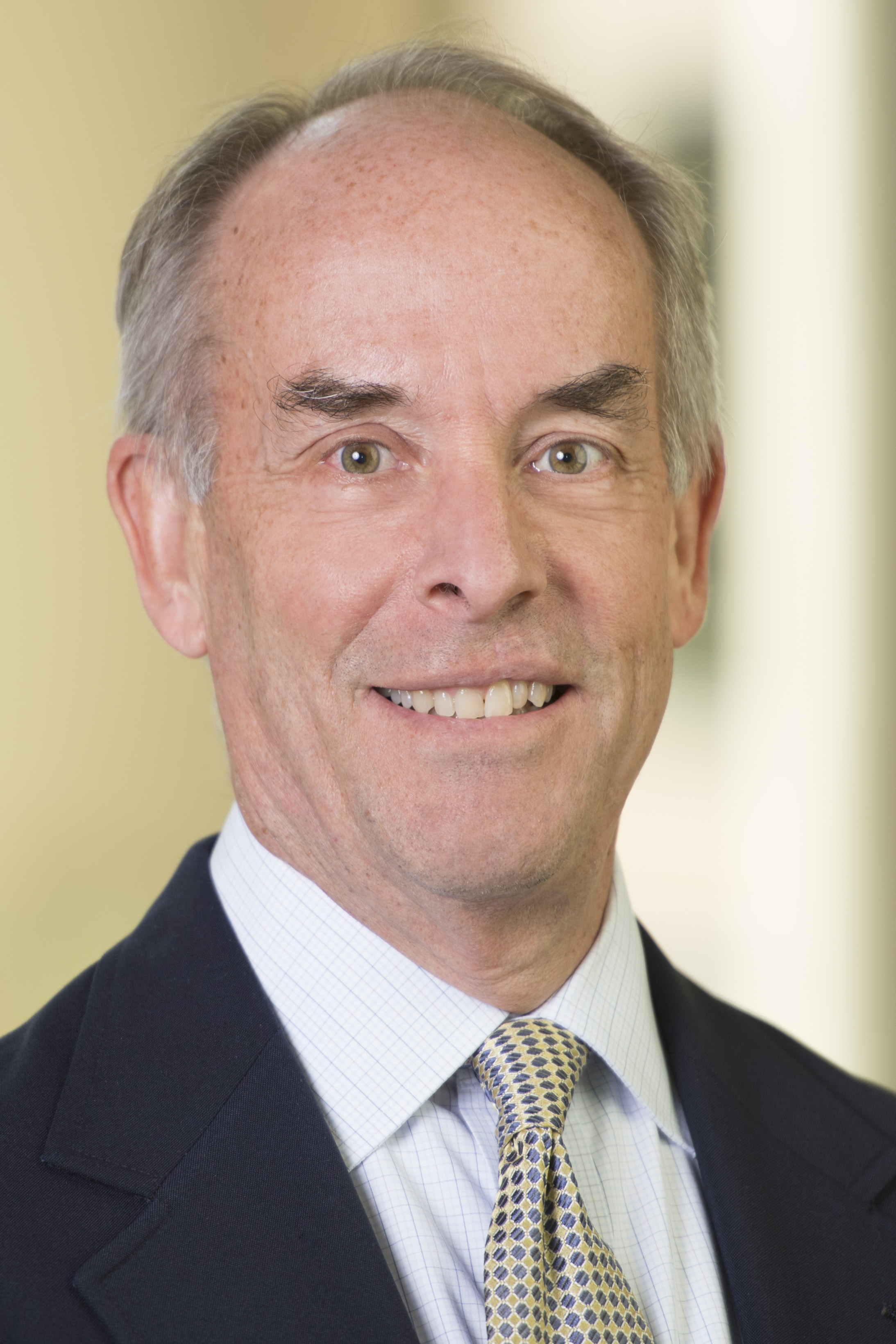
Lee Rainie
Director, Internet, Science and Technology - Pew Research Center
Lee Rainie is the director of internet, science and technology research at Pew Research Center. Under his leadership, the Center has issued more than 500 reports based on its surveys that examine people’s online activities and the internet’s role in their lives. He also directs the Center’s new initiative on the intersection of science and society. The American Sociological Association gave Rainie its award for “excellence in the reporting on social issues” in 2014 and described his work as the “most authoritative source of reliable data on the use and impact of the internet and mobile connectivity.”
Prior to launching Pew Research Center’s technology research, Rainie was managing editor of U.S. News & World Report. He is a graduate of Harvard University and has a master’s degree in political science from Long Island University.
Panelists
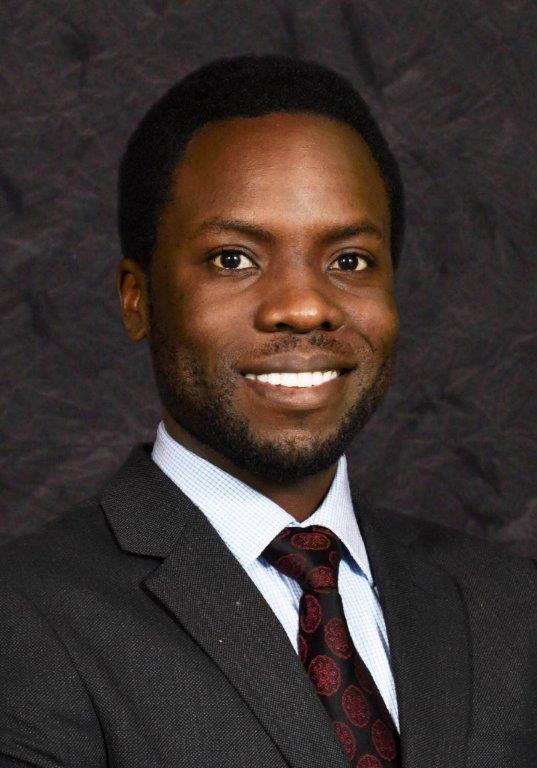
Namema Amendi
Legal & Policy Fellow, Microsoft
Namema Amendi is a Legal & Policy Fellow in Microsoft’s U.S. Government Affairs Policy team and a member of the company’s Affordable Access Initiatives team. The AAI team works with governments, research institutions, companies, and NGOs around the world to foster new wireless technologies and business models that will reduce the cost of wireless bandwidth and enable billions of people to get online more easily. The team has established wireless broadband projects in places as varied as the rural heart of Kenya and the urban complexity of Singapore. The team also has projects in countries including the U.S., Philippines, South Africa, Tanzania, Ghana, and India. Prior to joining Microsoft Namema completed fellowships with Columbia University’s Center on Sustainable Investment and Ciel Partners LLP, a New York-based venture incubator. He also worked as a consultant with Fanisi Capital, a Private Equity Firm with investments in five African countries. He received his bachelor’s degree in Biology from Columbia University and his law degree from Columbia Law School where was an editor of the Columbia Science & Technology Law Review.
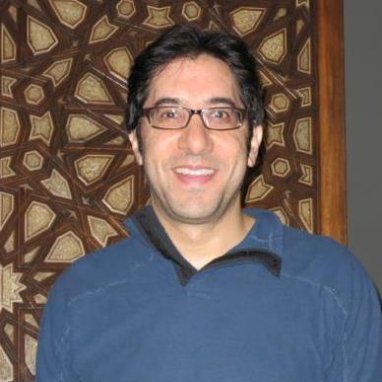
Jeff Blum
Senior Vice President and Deputy General Counsel, DISH Network
Jeff Blum serves as Senior Vice-President and Deputy General Counsel of DISH, overseeing litigation and government affairs. He has been with DISH for over 7 1/2 years. Before coming to DISH, Jeff was a partner at the Los Angeles firm of Davis Wright Tremaine, where his practice focused on copyright, First Amendment and anti-piracy litigation. He received his J.D., summa cum laude, from Boston University School of Law in 1995, graduating first in his class and serving as Note Editor of the Boston University Law Review. He received his B.A. from McGill University in 1992. After law school, he clerked for Chief Judge Joseph Tauro of the United States District Court for the District of Massachusetts. Jeff currently serves as Chairman of the Satellite Broadcasting and Communications Association (SBCA). Jeff also serves on the boards of the Computer & Communications Industry Association (CCIA), and the Broadband Technical Advisory Group (BITAG).
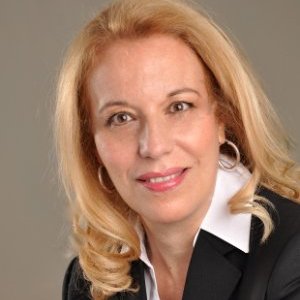
Olga Madruga Forti
Chief of the Global Strategy & Negotiations Division of the International Bureau of the FCC
Olga Madruga-Forti has more than 25 years of experience as a senior executive and legal practitioner in the telecommunications and satellite industries, as well as extensive experience in commercial negotiations across numerous emerging markets in Asia, Latin America, and Africa. Currently, she is Chief of the Global Strategies and Negotiation Division of the Federal Communications Commission (FCC), International Bureau returning to the Commission after 17 years of private sector international telecommunications experience. At the FCC Ms. Madruga- Forti leads the agencies international dialogue on a global basis. Much of her work is dedicated to helping developing countries establish new regulatory approaches that spur ICT development.
Prior to joining the FCC Ms. Madruga-Forti was based in Argentina where she represented regional telecommunications companies such as ARSAT S.A., an international satellite company, before the International Telecommunications Union. Ms. Madruga-Forti was also a Member of the Board for the Internet Corporation for Assigned Names and Numbers (ICANN) and an Adjunct Professor of Telecommunications Law and Negotiation at DePaul University Law School. Prior to this Ms. Madruga-Forti was Vice President, Regulatory and Legal, for several U.S. satellite companies heading global regulatory and market access operations.
Earlier in her career Ms. Madruga-Forti served nine years at the FCC as Special Counsel for International Satellite Policy and also Chief of the Domestic Services Branch of the Common Carrier Bureau. She earned her law degree from Georgetown University Law Center, in Washington, D.C. concentrating on international business law and graduating as the Belgrano Scholar to the Organization of American States. Prior to that, she graduated summa cum laude from Emory University with a double major in both English and French Literature. She is fluent in English, Spanish and French.

Nonabah Lane
Indigenous Communities
Nonabah Lane has more than fifteen years working in the field of environment science and sustainability. Her professional work has focused on education, sustainability consulting, green entrepreneurship, land remediation, land restoration and environmental policy.
As an entrepreneur, she has worked with Native American communities in developing strategies to help tribal enterprises and their industry partners. She has also co-authored environmental impact statements, environmental assessments, and land use planning grants that pertain to Indian Trust Land.
Nonabah is a Leadership in Energy and Environmental Design Accredited Professional (LEED AP). As a member of the Navajo Nation, she has high regard for Native American people, traditions and languages, which provides her with a unique perspective and expertise on technology and environment related issues. She is a lifelong Sequoyah Fellow of the American Indian Science and Engineering Society (AISES), and has a strong commitment to science, technology engineering and mathematics (STEM) education, strategic planning, and leadership in Indian Country. Nonabah has a Bachelor’s degree in Environmental Science and Policy from the University of Colorado at Boulder.
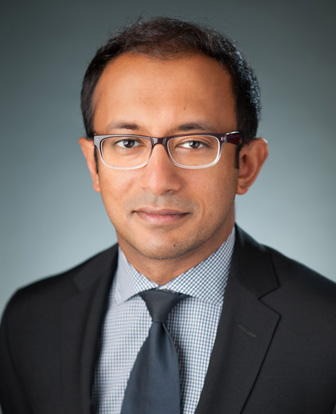
Madura Wijewardena
Executive Director, Global Public Policy at Comcast Corporation.
Madura Wijewardena is the Executive Director, Global Public Policy at Comcast Corporation.
At Comcast, Madura focuses on industry structure and competition in broadband access and pay-TV sectors. He supports the company’s Internet Essentials program by collaborating on survey research on customer behavior.
Prior to joining Comcast in March 2013, Madura was the Director of Research at the National Urban League (NUL) in Washington, D.C. where he undertook macroeconomic research. He also served in advisory roles to the U.S. Census Bureau on survey design.
Prior to NUL, Madura worked for a consulting firm in Chicago where he used demographic data analysis to assist service providers to target services. He also assisted advocacy campaigns to use data analysis and community organizing methods to build affinity groups and affect public opinion.
For the first eight years of his career, Madura was a transactions attorney in telecoms, media and technology. He was based in Australia with clients in Australia, Asia and the Middle East. He focused on joint ventures, acquisitions and alliances. Madura holds a master’s degree from the University of Chicago concentrating in economics/statistics, and a law degree and a bachelor’s degree in economics from the University of Sydney, Australia. He holds a certificate in executive leadership from the Darden School of Business, University of Virginia.
This panel focused on emerging best practices to expand digital inclusion and broadband access and adoption to areas of the country that have been historically underserved, including rural, remote and Indigenous communities, people with accessibility challenges, and low income populations. Ensuring affordability is a key shared challenge across markets. The panel explored the divergent challenges in bringing broadband to underserved populations, and helped increase this understanding through its focus both on the needs of the remote, rural and Indigenous communities, as well as the disabilities and special needs communities.
Olga Madruga Forti – Chief of the Global Strategy & Negotiations Division of the International Bureau of the FCC started off the panel talking about the goals of the FCC and all the actions the FCC has been doing to help the disability and special needs community. She went through the various programs that the FCC offers as well as some of the rules and procedures that the FCC as the regulator of the spectrum established. These include Closed captioning requirements, common carriage requirements, telecom relay services, e-911. Also requirements that all phone, computer, and cable operators must have projects that adhere to standards so that the devices used by these community will be able to function as they are expected.
One of the seminal pieces of legislations on connecting the disabled was the ADA act in 1990. Within the ADA there is a regulation on nationwide telecommunications relay services. The FCC established this and the rules of all providers to ensure that this relay service functions correctly. Now that we are going into the digital area the FCC is working hard to ensure these same rules apply in the new environment. This means that 911 needs to work with telecom relay and also that people can text to 911. the Video and Communications Accessibility Act, the ADA, and Telecom Act bridges the gap between technology and the policy and regulatory provisions that makes technology available to the disabled and it ensures that people with disabilities are not left behind with a proliferation of the Internet and mobile innovations. The law enables the FCC to work with others to identify barriers at the design stage so they can be assured technology will work at the getgo and not have to work to figure out a work around. They are also working to incentivize industry to build in the necessary flexibility in their own device on their own at the production stage. The CVA law necessitates that Internet browsers must be accessible to persons who are blind or have visual impairment at very little or nominal cost and this took in to effect in 2013. It is backed up by enforcement and fines for companies that do not obey these laws. To help people in the disability and special needs group to be able to purchase these devices that interact with computers, phones, tvs, etc, the FCC has a program called the national deafblind equipment distribution program. It has a national budget. It has an annual budget of $10 million and it is basically a direct subsidy type of program.
FCC rules require that 100% of new programming have closed captioning. So this is different when being visually impaired and being able to enjoy television. This is being hearing impaired and being able to enjoy programming either on television or on the Internet. So 100% of new programming has to be capable in that regard. 75% of older programming, this is expensive, isn’t it? So there is a provision that takes in to account that no provider should be required to spend more than 2% of annual revenue in complying with this provision. However, they do not require that user generated content be captioned although in the future there may be some requirements.
Next we heard from Namema Amendi – Legal & Policy Fellow, with Microsoft’s Access Program. Microsoft’s affordable access initiatives realizes that connectivity is a big problem and it becomes very difficult to support groups or to provide them with some of the products and services that Microsoft offers since everything today is cloud-based. As such they rely on the Internet to conduct business. Since Microsoft is not an ISP and do not have these big towers that lead to connectivity so they have to partner with other ISPs around the world and that is what they do. The Affordable Access Initiatives goes about the business of ensuring connectivity is through partnerships with ISPs, with other equipment providers. They also use a technology called White Space to bring this connectivity to remote rural areas. Microsoft then talked about the work they are doing in rural Virginia where they are delivering Office 365 to about 7500 primary and secondary school children in 18 schools. The goal here is to close the homework gap. Kids today use the Internet to do their homework, write papers, and do research to upload their stuff. However in rural areas, kids do not have this ability or access to broadband connectivity, so Microsoft is working to provide the area with connectivity. Microsoft is providing Internet connection to just schools and by using TV white space they are able to provide broadband access to students all over this region. One of the biggest problems is that broadband service usually typically costs about $35 to $75 a month and it becomes really difficult when people don’t have that much income to able to pay for this. Microsoft is partnering with the local Government and with the Federal Government through the lifeline program to help people in areas like rural Virginia to be able to afford Internet connectivity. Microsoft partners with small innovative companies, but for these companies access to capital is a big issue and so Microsoft works with these firms to introduce these ISPs to people who are able to fund them. Another thing we work on not necessarily in rural Virginia, power devices is a big issue across the world.
We then heard from Nonabah Lane about the struggles of the Native American Communities in obtaining Internet access, including the lack of the fundamental infrastructure that hampers efforts to bring broadband to these communities. Nonabah Lane is from the Navaho Nation told us that in her city there is no Internet access at all. Even for tribal meetings there is no Internet access and this could continue for days until the slow access that people do have is restored. She recalled that when she was writing her college applications and the applications for scholarship and these due or had fellowship applications due, and there was nowhere to get Internet services and so many people can not apply or apply late and then can not obtain the scholarship because of this. In many towns, there maybe the local tribal college library but that is it and the library often did not have access. Nona said that since her father was an educator she could go over in to his office and try to get online there, but others do not have this ability. Families use satellite Internet but this is vey expensive. Only the educational institutions have reliable public Internet access. In tribal areas you also have the U.S. Government entities, the Department of Interior, the U.S. Department of Health and Human Services that would provide public services to the tribal community and their Internet services is impeccable. But here again, because of security concerns no one could get on.
Tribal Governments have their own Internet access and often, broadband companies, reach out to them and offer low cost options, but these tribal governments do not allow the rest of the community to gain access to these special prices. Moreover, it is these same governments that are knowledgeable about grants and other benefits but do not share this knowledge with others in the community. She spoke about the huge amount of bureaucracy around and the difficulty in working through all the red tape in trying to do business with a lot of these tribal Governments that it takes years. She remains hopefully that forums such as these which tell the story of the problems that indigenous communities have on getting online tribes, that others will pressure the tribal leaders to reform or even recognize that they are putting there own people so far behind the rest of the world. Since each tribal government is different the best solution in her mind id to put together an action plan of what needs to be done and then pressure each community to get this done.
Jeff Blum, Senior Vice President and Deputy General Counsel, from Dish Network a satellite provider in rural and Native American populations told about how disheartened he is that today there are tribal communities in and about 10 million homes that don’t have access to real broadband. He stated that there are two major obstacles to providing broadband to rural communities. First is the cost and second is infrastructure. He talked about the BTOP grant program where Dish had partnered with a rural community to provide satellite broadband at lower cost and they were successful in getting over 10,000 new customers. He talked about the need for more similar programs. He would like Dish Network to be included in the lifeline and other universal service programs so consumers in rural areas could choose a technology that is affordable and a provider that can provide the coverage to all areas. If satellite could go to a tribal community and provide broadband cheaper than fiber or other technologies than satellite should get the subsidy. It should be about getting broadband cheapest, most effective cost effective way to communities.
Lastly, we heard from Madura Wijewardena – Executive Director, Global Public Policy at Comcast,
about their Internet essential program, which is their effort to eliminate the digital divide and address digital literacy in both the lower income and remote rural areas of the US. Comcast spoke about the two major problems of access and adoption. Comcast sought to address three main drivers of adoption. No. 1, relevance; 2, cost and 3, access to computer. Addressing one without the other is not going to solve the problem. Comcast wants to address all three of them so they can provide a high-speed connection 10 megabits down and WiFi router included for $9.95 a month. Since Comcast is not a computer company, they have created a partnership with others to provide a low cost computer (desktop or laptop) with Microsoft to include the Microsoft Office suite and Norton suite included at a subsidized cost of $150. Comcast is also offering a full suite of digital literacy, online training across a full range of topics in English and Spanish to anyone who is on the program or to anyone who is not on the program. So those are the elements of the program.
Additionally, Comcast is providing digital literacy training where they have partnered with over 9,000 organizations in the communities they service. Comcast provides the material about the programming in 14 languages and designs the material to fit with the particular needs of the community.They have also been working to expand eligibility and make it easier to enroll. The program is available to any family who has one child eligible for the free or reduced lunch program. For children who attend schools that have at least 40% of the population eligible for school lunch program everyone in that school is able to take advantage of the program. The entire school is automatically enrolled and the best part is that no one has to prove whether you are on are on the school lunch program.
The lack of broadband adoption in the US is not only with school age children but also with seniors, people who live in public housing, and students attending community colleges. These groups also have low broadband adoption so Comcast is piloting programs for these populations as well. The current pilot is targeting people living in public housing. These people are now able to get access to all three elements of the Internet Essentials program without having to go through the school lunch piece.
Registration is Open!
Join us for IGF-USA 2016!
Mailing List
Stay Informed
Get Involved
